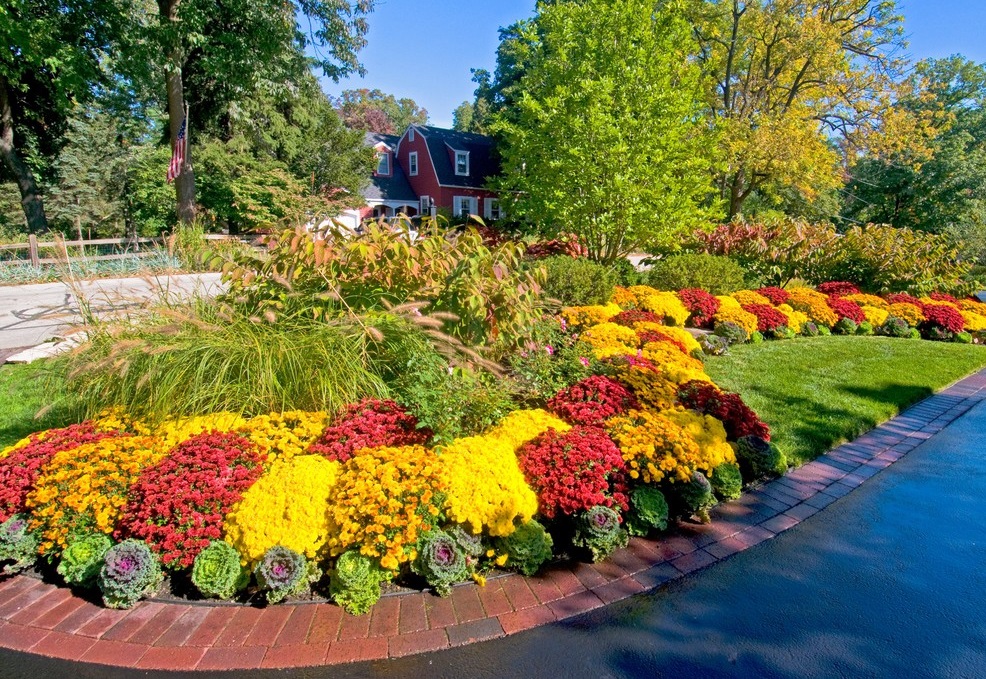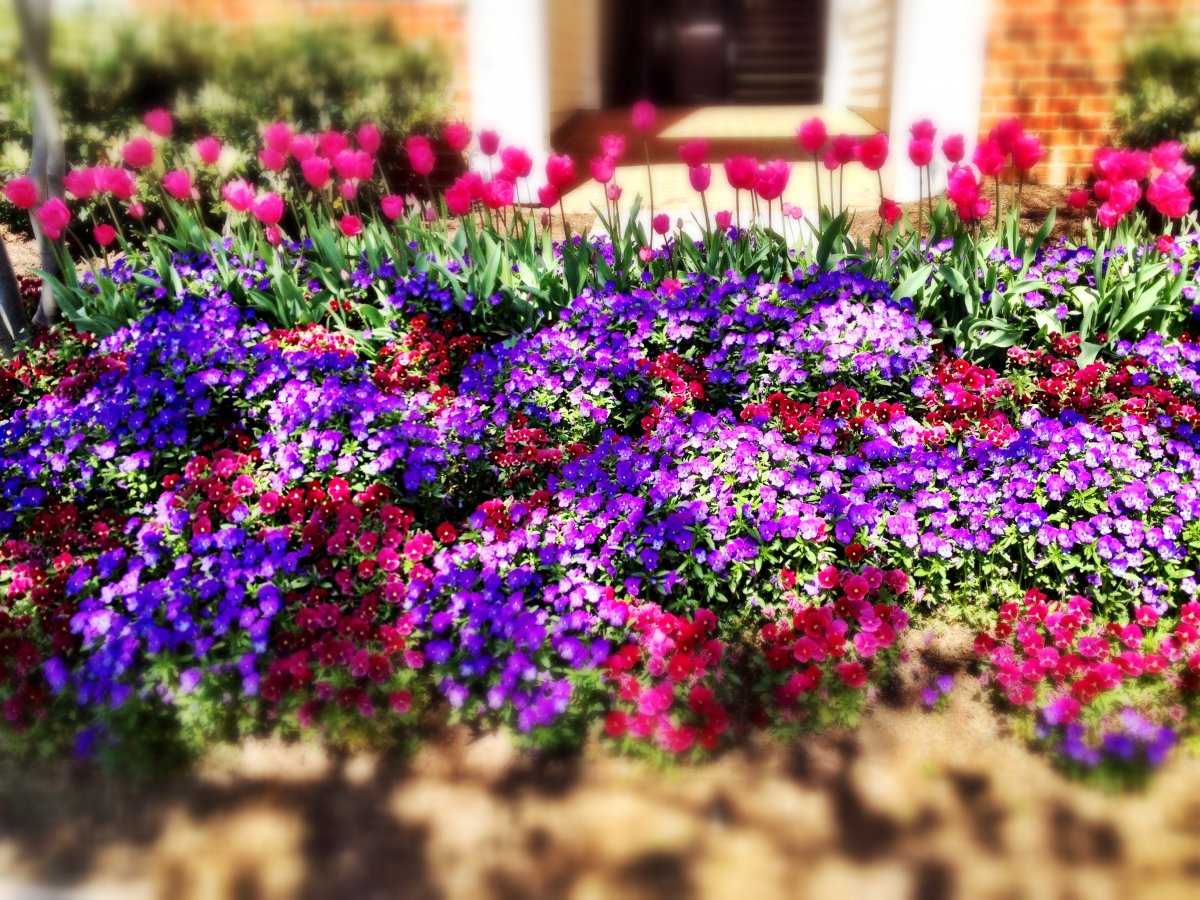You can choose a wide variety of flowers for decorating flower beds. Among the many annual and perennial varieties, there are, at first glance, very inconspicuous flowers. They are able to decorate any personal plot. Evening primrose can be considered one of these colors. Photos convey the bright colors of the opened buds well. They almost always open at the same time and delight the eye with their vibrant color.
What kind of evening primrose flower, what kind of care is it necessary for it, and how does it reproduce? In this article we will try to answer many questions related to the cultivation of this unusual flower.
What a perennial evening primrose flower
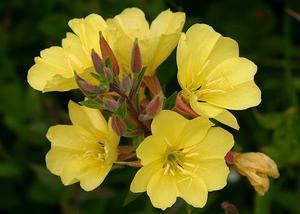 This flower is often called the "night candle" due to the fact that it blooms at night. Its brightly colored flowers seem to light up against the background of a flower bed and give their wonderful aroma.
This flower is often called the "night candle" due to the fact that it blooms at night. Its brightly colored flowers seem to light up against the background of a flower bed and give their wonderful aroma.
The flower grows mainly in Europe and Central America. Evening primrose stems are straight, there are also creeping, they are rigidly pubescent. In the photo, you can see that the stem has simple oval-elongated leaves.
In length, they grow to a maximum of 25 cm, are arranged in the same order. The expanding buds are like lanterns. They bloom in a matter of minutes and this is the beauty of evening primrose.
The photo clearly shows that evening primrose inflorescences are large and they can have different colors:
- Yellow.
- Purple.
- White.
- Pink.
Enotera belongs to the Cyprus family. This bright rhizome herbaceous plant can reach a height of 25 to 130 cm. In total, there are about 100 species of evening primrose... The plant can be:
- annual;
- two years old;
- perennial.
Most gardeners plant it in their flower beds, because caring for her is simple... You can inhale the evening primrose aroma. It is then that the buds begin to bloom, right before our eyes. Flowers bloom during the daytime on cloudy days.
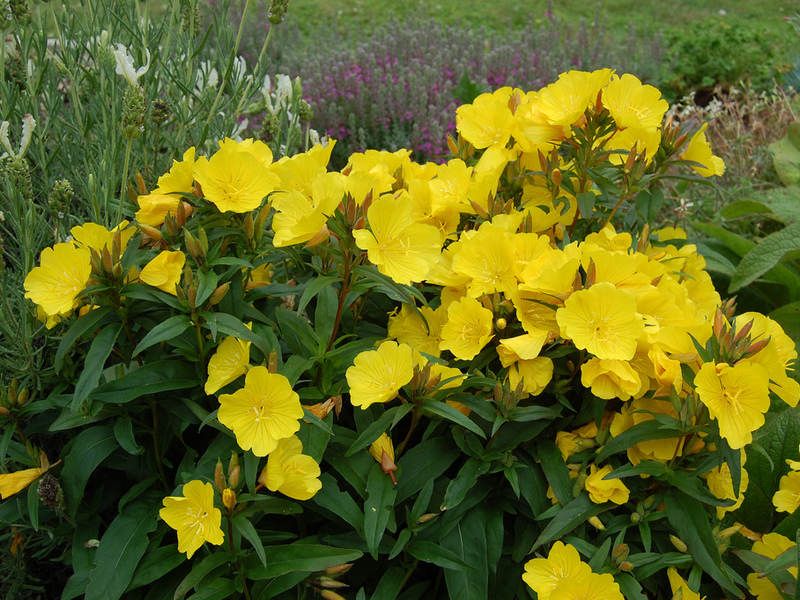
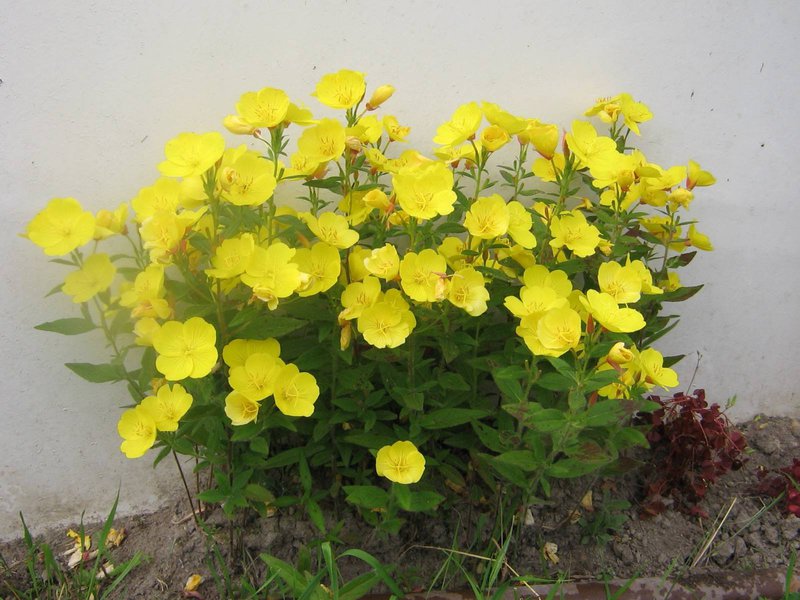

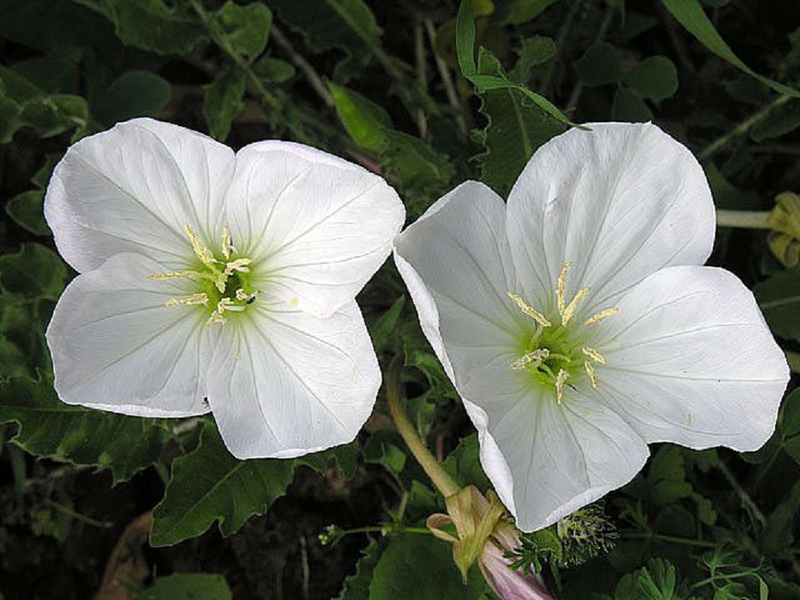
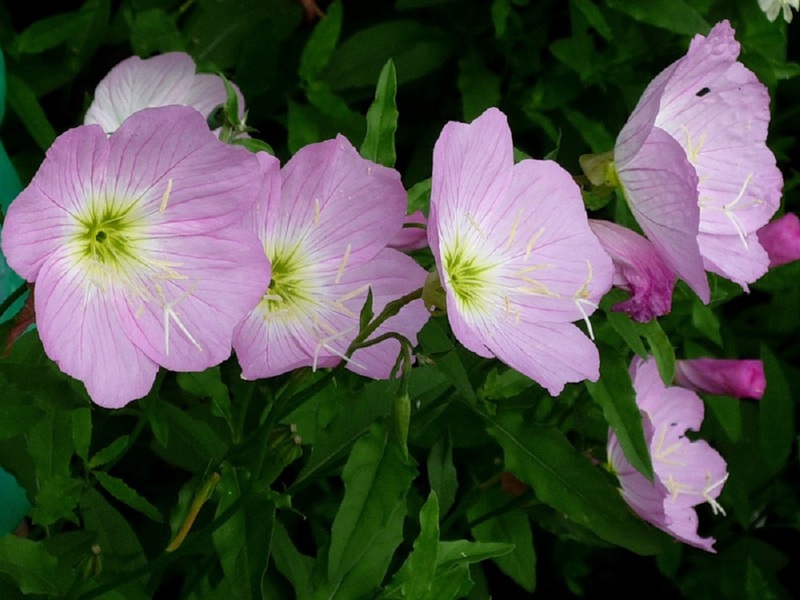
Perennial evening primrose species are most common. The flowers grow very quickly and form dense bushes of green shoots. The crown of the bushes is lush and dense, the leaves on the plant densely cover the shoots, which creates an excellent background for bright and fragrant flowers.
They can be collected in pairs or in clusters almost always cover the bush throughout the summer. On the threshold of dusk, the large "cups" of evening primrose begin to open, as these are evening flowers.
At the moment of opening, the bud makes a special sound that resembles a click. The only drawback is short flowering time one bud, just one night. More buds bloom the next night.
For growing in gardens, the three most common types are used:
- Large-flowered - it can reach a height of 2 meters, it has large fragrant flowers of bright yellow color.
- Missouri is a low-growing variety, blooms with small yellow inflorescences, up to 10 cm in size, they are distinguished by a delicate aroma with light notes of citrus scent.
- Shrub is a perennial bush, reaching a height of 1-1.2 meters, small yellow flowers up to 3 cm.
The soil is of great importance in the cultivation of evening primrose. Plant demanding for drainage and loosening... It depends on how the flowers will develop in the future.Before planting, you need to find a place and prepare the soil.
One of the important conditions for proper planting and growing is soil permeability and a sufficiently illuminated place.
Enotera does not like strong moisture, so its stagnation will have a detrimental effect on the root system of the plant. If you follow all the conditions of planting and care, then evening primrose will bloom very abundantly and for a long period.
You should not forget about feeding flowers. Preferably even before planting evening primrose fertilize the soil a mixture of humus with nitrophos. A composition is made of 2 tablespoons of nitrophoska and three kg of humus. It is introduced into the soil, which is dug up to a depth of 20 cm, after which the place for planting must be watered.
When planting, it must be borne in mind that the plant will grow, therefore it is necessary to plant evening primrose about half a meter from each other.
Reproduction and sowing of seeds
Evening primrose can reproduce in several ways:
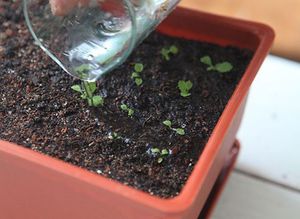 Self-seeding - reproduction occurs spontaneously.
Self-seeding - reproduction occurs spontaneously.- Sowing with seeds - you need to sow them yourself and grow seedlings, at the right time, transplant them into the ground.
- By dividing the bush - a part of the bush is cut off and transplanted to the planned place for planting in autumn or spring.
Sowing evening primrose seeds is the most time consuming process... The seeds are small enough, so they must be sown to a depth of no more than 5 mm.
At home, this must be done in February in order to get ready-made seedlings for growing and to have time to plant them. It is best to plant seedlings in May. Flowers can appear in the first year of the plant's life.
Necessary care
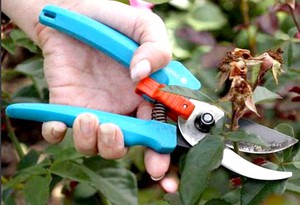 After planting evening primrose in any way, it needs care. Excessive watering harms development, it is better to do moderate and as needed watering. The soil must be loosened, but shallow, do not allow weeds to multiply.
After planting evening primrose in any way, it needs care. Excessive watering harms development, it is better to do moderate and as needed watering. The soil must be loosened, but shallow, do not allow weeds to multiply.
Before the onset of winter in the autumn season, preparatory work must be done. They will help the plant survive the winter. For this pruning bushes, and the root is mulched with a layer of at least 6 cm. Peat or compost is used as mulch.
Pruning bushes is also necessary so that the plant does not grow much. Evening primrose, with intensive growth, can suppress other flowers growing in the vicinity. The flower is resistant to disease and is not afraid of pests.
In addition to the beauty and aroma of flowers, the unusual plant brings other benefits. Enotera has long been used for medicinal purposes and in cosmetology... Decoctions were made from it based on flowers. The remedy is very effective in treating indigestion.
Also, a decoction is made from the roots of a plant, it is used for bruises and for washing wounds. Even a novice gardener can do simple evening primrose care. If you follow simple care requirements, flowers will give their enchanting aroma and beauty to those around you for many years.
